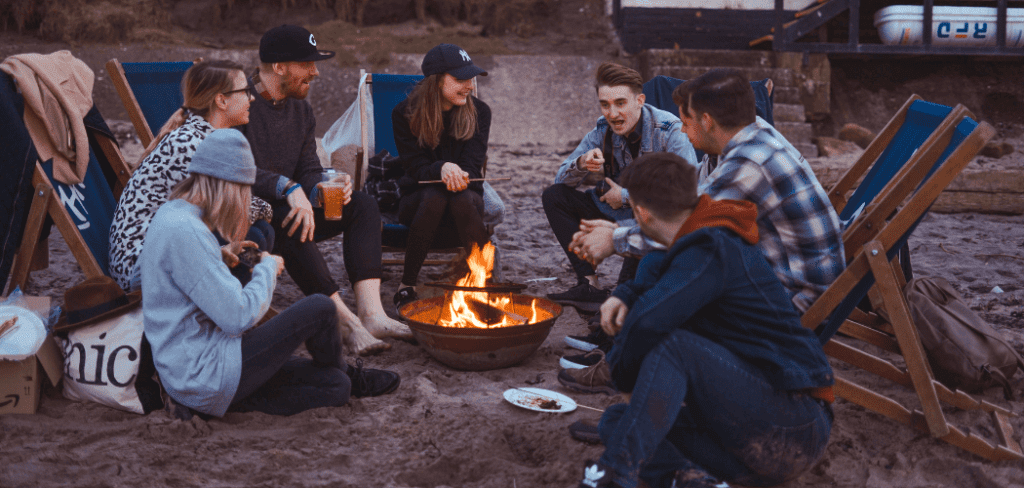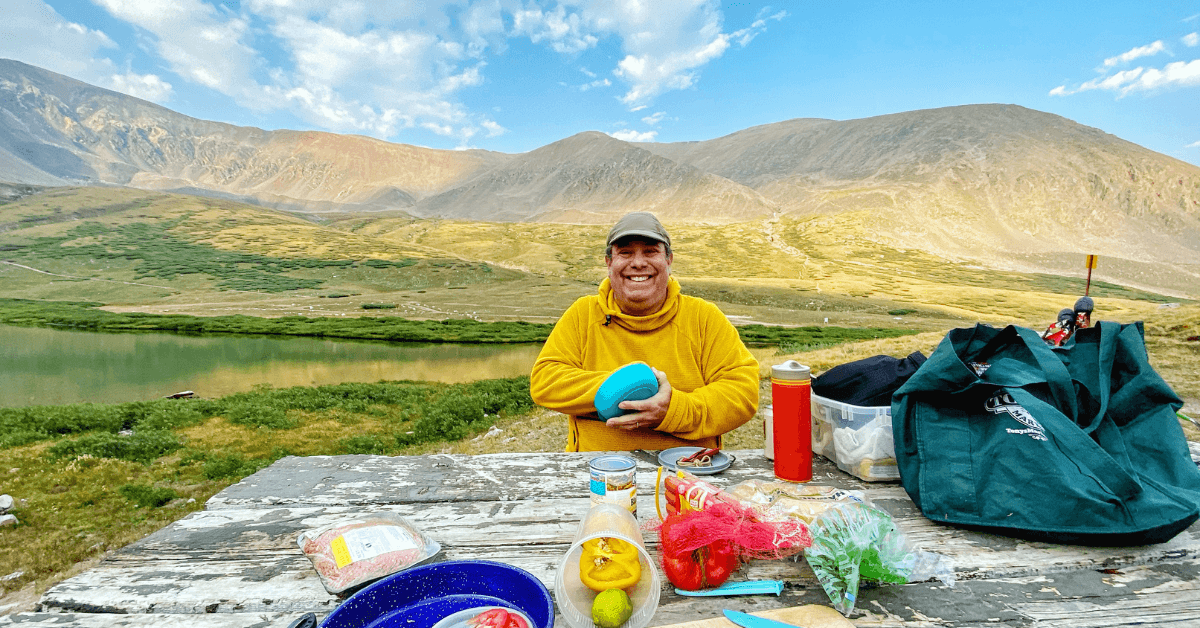When it comes to camping, having the right gear can make or break your experience. And while a lot of attention is paid to things like tents and sleeping bags, it’s important not to overlook the importance of properly storing your camping plates and bowls. Not only does this keep your gear organized and protected, but it can also save you space and make it easier to access what you need, when you need it.
With that in mind, the purpose of this article is to provide a comprehensive guide on how to store camping plates and bowls. We’ll cover the different types of camping plates and bowls, the factors to consider when storing them, and the most common storage methods.
We’ll also provide recommendations and tips for organizing and maximizing storage space. Whether you’re a seasoned camper or just starting out, this article is designed to help you make the most of your camping gear.
Types of Camping Plates and Bowls You Should Use
Camping plates and bowls come in all shapes and sizes, each type with its own unique set of pros and cons. The three types of camping plates and bowls you’ll find are plastic plates, metal plates, ceramic bowls, and silicone bowls.
Pros and Cons of Each Type of Camping Plate and Bowl
When it comes to choosing the right camping plates and bowls for you, it’s important to consider the pros and cons of each type. Plastic plates are a popular choice for their affordability and ease of use, but they can also crack or break easily.
Metal plates are durable and long-lasting, but they can be heavy and take up more space. Ceramic bowls are beautiful and versatile, but they can be fragile and difficult to pack. And silicone bowls are flexible and easy to store, but they can retain odors and flavors.
Considerations When Choosing Which Type to Use and Store
Ultimately, the type of camping plates and bowls you choose will depend on your personal preferences and needs. When making your decision, consider things like the type of camping you’ll be doing (backpacking, car camping, etc.), the space you have available, and the durability you’re looking for.
And don’t forget to take into account how you’ll be storing your plates and bowls, as this can have a big impact on the type of gear you choose.
How Do You Store Camping Plates and Bowls?
Now comes the most exciting section of the guide. I won’t waste your time, so let’s take a look at the first way to store camping plates and bowls.
1. Plastic Tubs and Containers
One of the simplest and most effective methods of storing camping plates and bowls is using plastic tubs and containers. These containers come in a variety of sizes and shapes and are made from durable, lightweight plastic that can protect your gear from scratches, bumps, and other types of damage.
They also offer ample storage space, making it easy to keep your gear neatly organized and accessible.
2. Mesh Bags and Pouches
Another popular method of storing camping plates and bowls is using mesh bags and pouches. These bags and pouches are lightweight, portable, and breathable, making them a great choice for backpacking and other types of camping where space and weight are a concern. Mesh bags and pouches also offer ample storage space, and make it easy to see and access your camping plates and bowls.
3. Duffel Bags and Backpacks
For larger camping trips, duffel bags and backpacks can be an effective method of storing camping plates and bowls. These bags offer ample storage space and are designed to be durable and protective, so you can be sure your gear stays safe and secure, no matter what. They also make it easy to pack and carry your gear, so you can take everything you need with you, no matter where your adventures take you.
4. Compression Sacks and Dry Bags
For those who are looking for a compact and lightweight solution for storing camping plates and bowls, compression sacks and dry bags can be great options. These bags compress your gear to save space and are made from waterproof and durable materials, so you can be sure your gear stays safe and dry, no matter what.
Compression Sacks and Dry Bags are also easy to pack and carry, making them a great choice for backpacking and other types of camping where space is limited.
Related: How Do you Store Camping Gear in the Basement?
Importance of Choosing the Right Method
No matter what type of camping you’ll be doing, or how many camping plates and bowls you have, choosing the right method of storage is key. From plastic tubs and containers, to mesh bags and pouches, to duffel bags and backpacks, each method offers its own unique set of pros and cons.
By taking the time to consider your needs, and choosing the right method of storage for you, you can ensure your camping plates and bowls stay safe, secure, and accessible, no matter where your adventures take you.
Factors to Consider When Picking How to Store Camping Plates and Bowls

Next, we’ll take a look at five factors one should consider when picking the best method to store camping plates and bowls. Take each of these into proper consideration to ensure the safety and reliability of your camping plates and bowls are retained.
1. Durability and Protection
One of the most important factors to consider when storing camping plates and bowls is durability and protection. You want to ensure that your gear stays in good condition, no matter how rough and tumble your camping trips get. Wh
en choosing a storage method, look for options that offer a high level of protection and are made from durable materials that can withstand the elements.
2. Space and Portability
Another important factor to consider is space and portability. You want to be able to store your camping plates and bowls in a way that takes up as little space as possible, while still providing ample protection.
When choosing a storage method, look for options that are compact and lightweight, so you can easily pack and carry them with you on your camping trips.
3. Accessibility
Accessibility is another important factor to consider when storing camping plates and bowls. You want to be able to easily access and grab what you need, when you need it. When choosing a storage method, look for options that offer quick and easy access, so you can get your hands on your gear without having to dig through a pile of other gear first.
4. Convenience and Organization
Finally, it’s important to consider convenience and organization when storing camping plates and bowls. You want to be able to quickly and easily find what you need, and keep your gear organized and in good condition. When choosing a storage method, look for options that offer ample storage space, and make it easy to keep your gear neatly organized.
Importance of these factors
It’s clear that there are many factors to consider when storing camping plates and bowls. From durability and protection to space and portability to accessibility and organization, each factor plays an important role in keeping your gear in good condition.
By taking the time to consider each of these factors, you can choose the right storage method for you, and make sure your camping plates and bowls stay safe, secure, and accessible, no matter where your adventures take you.
4 Tips for Storing Camping Plates and Bowls
By following the tips for storing camping plates and bowls I’m about to share below, you can help ensure your gear stays in good condition, and is ready to go whenever you need it. Whether you’re packing for a backpacking trip, or just getting ready for a weekend camping adventure, these tips will help you keep your gear organized, protected, and ready to go.
1. Keep Them Clean and Dry
One of the most important tips for storing camping plates and bowls is to keep them clean and dry. Dirt and moisture can cause your gear to become damaged, and can also attract unwanted pests like insects and rodents. So, after each use, make sure to wash and dry your gear thoroughly, and store it in a clean, dry place.
2. Stack Them Neatly
Another important tip for storing camping plates and bowls is to stack them neatly. Stacking your gear in a disorganized manner can cause scratches, dings, and other types of damage, so take the time to stack your gear neatly, and store it in a place where it won’t be knocked around.
3. Label Your Containers
Labeling your containers can also be a helpful tip for storing camping plates and bowls. This will help you keep your gear organized, and make it easier to find what you need, when you need it. You can label your containers with a simple piece of tape, or with a more permanent labeling solution, like a sharpie or label maker.
4. Use a Tarp or Ground Cover
When storing camping plates and bowls outside, it’s important to use a tarp or ground cover to protect your gear from moisture and other elements. This will help keep your gear in good condition, and prevent damage caused by water, sun, and other types of weather.
5. Store Them in a Cool, Dry Place
Finally, it’s important to store your camping plates and bowls in a cool, dry place. Exposure to heat, moisture, and sunlight can cause your gear to become damaged, so make sure to store your gear in a place where it won’t be exposed to these elements. This can include a closet, a garage, or even a storage shed.
